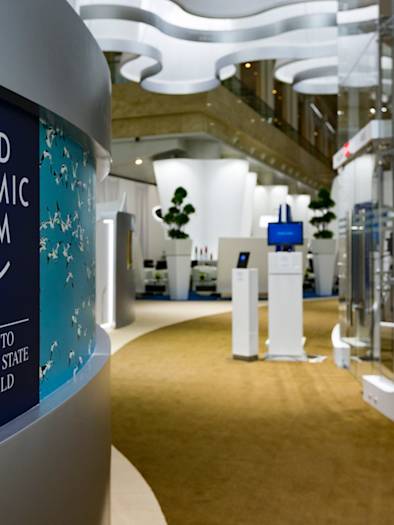
Reimagining the future of trade in Asia
How the Regional Comprehensive Economic Partnership (RCEP) could eventually usher in an era of much deeper regional integration as well as a new chapter for globalization
Last month, 15 countries in the Asia-Pacific region – including the 10 member states of the Association of Southeast Asian Nations (ASEAN) as well as China, Australia, Japan, New Zealand, and South Korea – signed the landmark Regional Comprehensive Economic Partnership (RCEP) on the final day of the 37th ASEAN Summit.In the below piece, H+K China takes a look at how the emergence of the world’s newest and biggest economic club in Asia may shape the regional trade order, geostrategic rivalries, and the future of globalization. Key highlights include:
The RCEP is the largest free trade pact in history, with its 15 member states currently encompassing about one-third of the global economy and projected to account for 50% by 2030.
While not pioneering major breakthroughs in trade liberalization – its provisions are generally more modest compared to Asia’s existing multilateral and bilateral trade deals – the RCEP’s significance lies in its sheer scale, success in bringing together a hugely diverse set of member nations, and potential to ultimately create a much more unified trading zone in the world’s fastest-growing region.
What’s more, the new multilateral compact underscores the extent to which Asian economies are increasingly rallying together to build the region’s future trade architecture themselves and assume a role in global governance that better reflects their rising economic clout and dynamism.
China looks set to be a major beneficiary of the new treaty, whose signing marked an important economic win as well as a diplomatic coup for the RCEP’s heavyweight. China will be well-placed to leverage the new multilateral framework as a vehicle to bolster its regional leadership and secure new and deeper free-trade arrangements with other participating countries.
America is now left outside Asia’s two main trading groups, the RCEP and the CPTPP. For the world’s largest economy, the near-term ramifications will be minimal, but the long-term consequences could be grave if the U.S. remains marginalized from the region’s top multilateral frameworks.
Companies’ future success in the region may well hinge on how adeptly they navigate the evolution of Asia’s trade landscape under the RCEP. While the new economic zone is not expected to enter into force until late next year or early 2022, the time to start getting RCEP-ready is now.
A mammoth free trade pact for the world’s fastest-growing region
Nearly a decade in the making, the RCEP creates a massive new pan-Asia economic bloc that is larger than both the U.S.-Mexico-Canada Agreement and the E.U. The mega-pact currently encompasses about one-third of the world’s economy and population, covering a market of 2.2 billion people and US$26.2 trillion of global output. More importantly, the Asia-Pacific region’s economic weight is expected to continue to grow rapidly in the years ahead as the center of economic gravity continues to shift ever eastwards. By 2030, the 15 RCEP economies are projected to expand to account for roughly 50% of the world’s GDP, according to HSBC.
Before taking effect, the RCEP still needs to be ratified by the national governments of at least six ASEAN countries and three other member states. This could be a slow process, and even after ratification it will then take years for the RCEP to go fully operational. While the immediate economic benefits will be limited, the eventual creation of a more unified and cohesive regional trading system is expected to set the foundation for participating countries to pursue much deeper economic cooperation and integration in the future. Economists at the Peterson Institute for International Economics estimate that the RCEP could add nearly US$200 billion annually to the global economy within the next decade.
Writing a new rulebook for free-flowing Asian trade
So what exactly will the RCEP do? In terms of its specific provisions, the new accord is not a game-changer for trade liberalization. It covers many of the standard issues of a free trade agreement (FTA), aiming to reduce tariffs – abolishing around 90% of duties on imports within the next 20 years – as well as establish common rules on investment, financial and professional services, telecommunications, e-commerce, and intellectual property, among other areas. With most of the member states already having close trading relationships with one another, the RCEP primarily takes many of the separate FTAs signed by the 10 ASEAN nations with their partners and consolidates them into a single multilateral framework with Australia, China, Japan, New Zealand, and South Korea. This streamlining of current trading arrangements should help to cut costs for businesses.
Perhaps most significantly, the RCEP creates a unified framework for rules of origin – which officially define where a product comes from – among its signatories for the first time. Setting out how much of a product must be produced within the region for it to enjoy lower tariffs, the deal scraps the different rules of origin under ASEAN’s existing trade agreements. For companies, the standardized rules of origin, requiring only a single document to cover all member states, could make it much easier for them to establish supply chains spanning multiple countries. This is expected to help attract greater foreign investment and further bolster Asia-centric supply chains. According to Euler Hermes, the uniform rules of origin could expand regional trade by around US$90 billion annually.
Although not yet agreed upon, new e-commerce regulations will be a priority area for future discussions. In particular, the RCEP intends to support small- and medium-sized businesses’ participation in online marketplaces, promote consumer privacy and data protection, and enable electronic authentication and electronic signature. With the pandemic having already accelerated the shift towards digital retailing across the region, codifying common rules for the sector could eventually facilitate a boom in cross-border e-commerce among participating countries. And China, home to e-commerce giants such as Alibaba, JD.com, and Pinduoduo, could benefit tremendously. For instance, the RCEP will likely pave the way for Chinese tech conglomerates to further deepen their presence in Southeast Asia’s thriving e-commerce market, which could surpass US$300 billion by 2025, according to a study by Google, Temasek, and Bain & Company. Looking the other way, the accord will also help member states to expand digital sales of their products in the world’s second-largest economy.
Bringing together an immensely diverse set of nations
Broadly speaking, the RCEP is not as far-reaching in terms of trade liberalization as the region’s existing multilateral and bilateral deals. The Wall Street Journal notes that, “Where other countries or groups have deeper arrangements already, they will override RCEP’s less ambitious rules. As a result, the new bloc seems likely to continue as more of a rule-taker than a rule-maker.” For instance, the RCEP is more modest in scope than the Comprehensive and Progressive Agreement for Trans-Pacific Partnership (CPTPP), the successor to the former U.S.-led Trans-Pacific Partnership (TPP) that President Trump withdrew from immediately after taking office. It offers fewer tariff reductions than under the CPTPP, which aims to eliminate nearly 100% of duties. The CPTPP also includes provisions on the environment and labor, whereas the RCEP leaves such issues unaddressed.
But while the RCEP may not be pioneering breakthroughs in trade governance, the new multilateral agreement’s significance lies in its potential to create a more unified trading zone in the world’s fastest-growing region – similar to North America and the E.U. – and usher in an era of much deeper intra-Asian trade. Its success in bringing together such an incredibly diverse set of nations, spanning multiple stages of economic development and vastly different political systems, was no easy feat (and the reason why some provisions were softened to accommodate the multitude of interests being aligned). And given that a number of its members have often had difficult diplomatic relationships, especially China and Japan and, most notably this year, China and Australia, with tensions between Beijing and Canberra having escalated to historic highs, the fact that the RCEP was signed at all was an accomplishment in of and itself.
However, the RCEP has not yet succeeded in bringing India into the fold. Last year, the Modi government declined to join the RCEP, pulling the major regional economy out of negotiations. At the time, a diplomat from the Ministry of External Affairs attributed India’s decision to exit the talks as being due to “significant issues of core interest that remained unresolved.” In particular, India has been worried that further opening up its markets would lead to a flood of cheap imports, especially from China, and hurt key domestic industries. For now, the RCEP members have provided India with a special accession opportunity should it wish to reconsider joining in the future, but ongoing nationalist concerns will likely make India reluctant to get onboard in the short to medium-term.
Asia embraces multilateralism amid de-globalization and economic gloom
Other than India’s notable absence, the RCEP also sends a powerful signal that Asia is committed to forging ahead with multilateralism and trade liberalization at a time when other regions have become more skeptical about the benefits of globalization. This has been most apparent in Trump’s “America First” first strategy and Britain’s long, arduous departure from the E.U. If the RCEP ultimately succeeds in binding its constituents more deeply together, then this could act as a significant counterbalance to growing protectionism around the world. Most importantly, the RCEP underscores how Asia’s vibrant economies are increasingly coming together to build the region’s future trade architecture themselves and assume a role in global governance that properly reflects their rising economic clout and dynamism.
What’s more, the inking of the RCEP offered a rare point of light against 2020’s dark overall economic picture, with the world mired in its worst recession in decades. A joint statement issued by leaders after the ASEAN summit emphasized that the agreement “is critical to the region’s response to the Covid-19 pandemic and will play an important role in building the region’s resilience through an inclusive and sustainable post-pandemic economic recovery process.” It is hoped that the RCEP will help to uplift global growth, although this will be more feasible longer term given that the deal is not likely to come into force until either late next year or early 2022.
China secures an economic win and a diplomatic coup
As the top trading partner for many countries in the region, China is expected to be a major beneficiary of the RCEP. The treaty is not technically a Beijing-led initiative – the lengthy negotiations were formally driven by ASEAN – but China will clearly play a central role in the arrangement given its sheer scale, with the Chinese economy accounting for over half of the RCEP’s GDP. This will put the Chinese government in a much stronger position to exercise considerable influence in setting standards for regional trade and investment going forward. In the long run, Beijing will likely use the new multilateral framework as a vehicle to bolster its regional leadership and position the Chinese economy at the heart of Asia’s trade order.
In particular, the RCEP is anticipated to pave the way for China to establish both new and deeper free-trade arrangements with other participating nations. For example, while the deal is noteworthy for marking the first FTA shared between China, Japan, and South Korea, there are also hopes that the RCEP will eventually facilitate a trilateral FTA between the region’s three largest economies, for which talks have been ongoing for eight years. Additionally, the RCEP further strengthens the prospects for accelerated economic integration between China and countries in Southeast Asia, many of which currently have bilateral FTAs in place with their northern neighbor. ASEAN already overtook the E.U. to become China’s largest trading partner this year, and the RCEP will likely help to sustain that positive momentum.
Being an integral member of the region’s largest multilateral compact will also help China to hedge against mounting external risks to its continued development and mitigate its vulnerability to escalating tensions with many Western economies, especially the U.S. As part of this, Chinese authorities and state media have emphasized how the RCEP will support China’s “dual circulation” strategy (DCS), the country’s new economic paradigm for its upcoming 14th Five-Year Plan (2021-2025) “where domestic and overseas markets reinforce each other, with the new domestic market as the mainstay.” The main thrust of the DCS will be to reorient China more towards its gigantic domestic market and strengthen its economic self-reliance, but Beijing has repeatedly underscored that continuing to deepen China’s ties with the global economy remains an absolute priority under the new growth model.
The RCEP could assist in realizing both of the DCS’ key goals by helping to “expand China’s export market, meet the needs of domestic import consumption, and strengthen regional industrial and supply chains,” as the Chinese vice minister of commerce described it. For example, while China is under pressure from trade tensions and rising labor costs at home, it looks set to benefit from the new rules of origin which will likely reinforce its position in global supply chains by incentivizing certain companies not to shift production elsewhere. The development of the Belt and Road Initiative (BRI), China’s massive overseas infrastructure program, could also receive a considerable boost from the RCEP throughout its southern gateway of ASEAN. The president of a leading Chinese think tank recently opined that the signing of the accord will “inspire the BRI to seek more multilateral arrangements that are broader in scale and depth.”
And in the wake of America’s withdrawal from the TPP, the RCEP also represents an important diplomatic coup for China, strengthening its bid to position itself as the region’s lead champion for deeper economic integration. Premier Li hailed the treaty as being “not only a monumental achievement in East Asian regional cooperation, but more important, a victory of multilateralism and free trade.” What’s more, Beijing already looks set to expand its pursuit of other Asia-centric multilateral frameworks, with President Xi announcing just a week after the signing of the RCEP that China would “actively consider” joining the 11-nation CPTPP, the region’s other mega-pact. Whether China ultimately enters the CPTPP remains to be seen, but negotiations between Beijing and the accord’s current members will probably be held at some point in the future.
America left adrift in Asia?
With the signing of the RCEP and the CPTPP having gone into effect two years ago, the U.S. is now left outside Asia’s two main trading groups. The near-term ramifications for the world’s largest economy are expected to be marginal since both treaties will take years to fully take shape. But the consequences could be grave if America remains marginalized from the region’s top multilateral frameworks over the long term. Both the RCEP and the CPTPP have made it clear that Asian economies are going to continue pressing ahead with setting new trading rules between themselves – with or without American leadership or even involvement. Unless the U.S. reengages, it will likely see the erosion of its regional influence accelerate as a new phase of Asia-driven globalization begins to unfold. And this could gradually put U.S. companies at a considerable disadvantage while striving to compete with local companies throughout the region.
For President-elect Biden, the RCEP will present one of the initial challenges for his administration’s trade policy. Compared to his predecessor, Biden is expected to pursue a far more multilateralist approach to countering China’s rising influence by focusing on building consensus among key U.S. allies and partners. Yet it is unclear whether Biden will seek to join the Japan-led CPTPP, the renegotiated version of the TPP which formed an important part of President Obama’s “Asian pivot” strategy. Thus far, he has been noncommittal about the CPTPP, having said little about the treaty either during his campaign or since the election.
Times have changed since the Obama years though, and greater bipartisan skepticism about the benefits of free trade deals could dissuade Biden from staging a return to the CPTPP. But either way, he will likely put the formulation of his administration’s international trade and China policies on the backburner during the early days of his presidency. Addressing the most pressing domestic issues will be his top priority at first, in particular getting the public-health crisis under control and supporting America’s economic recovery.
Rewiring business strategies for the RCEP era
For corporates doing business in the region, their future success may well hinge on how adeptly they manage to navigate the evolution of Asia’s trade landscape under the RCEP. It will probably be a year or so before the vast economic zone is officially launched, but the time to start getting ready is now.
Companies are encouraged to first acquire an in-depth understanding of the new multilateral treaty and then carry out strategic assessments about how it may impact their operations across various time horizons – beginning from the day it takes effect through the short, medium, and long run. Taking a forward-thinking approach will be critical to effectively maximize the benefits available to their businesses while minimizing any potential risks as the world’s largest free trade pact takes shape in the coming years.







